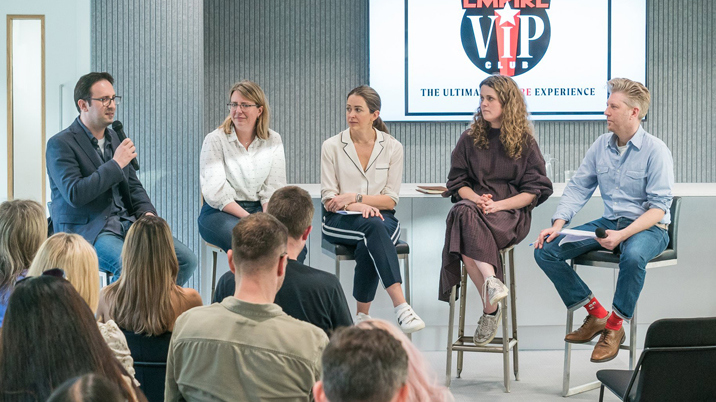
I hosted a stellar panel made up of Maisie McCabe, editor of Campaign, Catherine de Lange, editor of New Scientist, Abi Spooner, strategy partner at Atlas, and Nick de Semlyen, editor of Empire.
The discussion ranged widely, exploring the recent shift to subscriptions and how it favours content publishers. Despite a reputation for complexity, all successful strategies focus on building long-term relationships with subscribers. Here are my seven key takeaways to keep your customers engaged and paying.
1. Take time to understand your customers’ needs
Understanding what solution your content is fulfilling for the customer is the key to reaching them. Perhaps they want to “make sense of the universe”, need help to “do their jobs better” or just need “a moment of relaxation”. Instead of strategising tactics, choosing channels or deciding how much to spend on marketing, spend your time getting to know your audience’s needs. Once you truly understand your audience, you’ll know exactly how to find them.
2. Price is the wrong question
“How do I provide value?” is the question you should be asking. Price isn’t the same as value. Subscriptions are a value-exchange where customers agree to pay you for the chance to spend time with your magazine. If the value you’re giving your customers is not sufficient, it doesn’t matter what you’re charging, they won’t pay for it. So, try asking your subscribers this: “Do you think a subscription to this title is great / good / acceptable / terrible value?” Most of your customers should sit squarely in the “good value” bracket. (If they think your product is “terrific value”, you’re not charging enough!)
3. Build a sense of belonging
A big part of that value proposition is fostering an inclusive membership vibe – the feeling of being part of a group of like-minded people. Different brands have found different ways to achieve this. While not as profitable as large events, smaller exclusive events are brilliant for generating buzz in the room and boosting brand awareness (along with offering lots of opportunities for repackaging content). Other smart moves include tailored newsletters, exclusive podcasts, special digital covers and sneak previews. However, it often just comes down to being first, getting that interview or photoshoot no one else can, and delivering the best content you can.
4. LTV is the ultimate subs metric
Lifetime value (LTV) is basically how much money a customer will bring you over time. It’s the most accurate and profitable way to judge the success of a subs model (and ROI). LTV enables you to bring a complex problem like subscriptions down to a single metric. It wraps up how much subscribers pay and how long they stay with you, all set against costs to acquire a new customer. On children’s titles, where our subscribers might only remain loyal for a couple of years, we use this metric all the time.
5. AI isn’t the enemy
AI offers some exciting potential for boosting subscriptions. New tools can help you understand the propensity of users to subscribe when they hit a website, or deliver the right message to the right customer at the right time. By analysing your articles, AI may be able to suggest features and formats optimised for driving subscriptions.
6. It’s important to go out and fail
You don’t just learn from successes. Failure sucks, but it can be a learning experience – take the value from it and roll it into the next venture. Alternatively, watch closely whenever brands you respect (and who are doing things well) do something new. If they do it again, copy it.
7. Respect the editorial team
Today’s editorial team produces a dizzying array of products across multiple media, from newsletters and podcasts to websites and events, and everything that goes into creating and running them. That’s on top of keeping everything going, so editors must lean into the passion of their teams, but also share out overloads and keep a close eye to avoid burnout. Remember: ultimately everything comes from the content. It’s the job of the editor to remind other departments “if you break the content, none of your businesses work”.

The event, which took place at Bauer Media Group’s recently opened The Lantern on 9 May, was part of the BSME’s programme of events, which focus on the power of trusted journalism, editorial innovation, and inclusion in magazine media. You can find video and photos from the event here.












